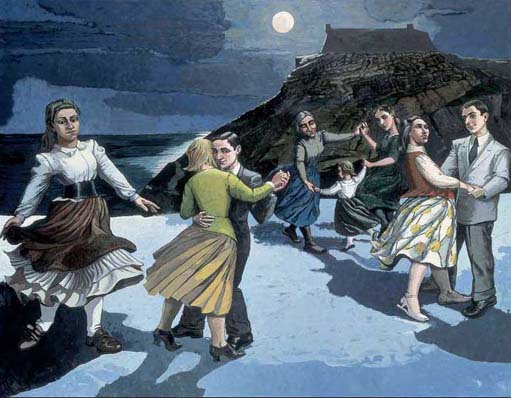5.2 Question 1: Has a wide or narrow palette of colours been used?
The word ‘palette’ is used when describing the number of different colours that are present in an art work. A painting with many different colours, for example Chris Ofili's Afrodizzia (Plate 8), can be said to feature a wide palette of colours. In Paula Rego's The Dance (Plate 14) the range of colours is more limited, comprising mostly blue and yellow hues, so the painting can be said to feature a narrow palette.
Plate 8

Plate 14

Having identified the variety of colours that have been used in an art work, it's important to explore the effects of this. In Afrodizzia for example, the wide colour palette might be seen to convey a sense of confusion, giving no clues about which part of the painting to focus on first. It might also be seen to contribute to a joyous or cheerful feel. In my response to Activity 4 I described Afrodizzia as being ‘psychedelic’ and ‘colourful’. Clearly the colours had an immediate impact on me. In comparison, The Dance, with its more limited palette, feels calm, stately and subdued, effects that seem to be in keeping with the moonlit scene represented.
